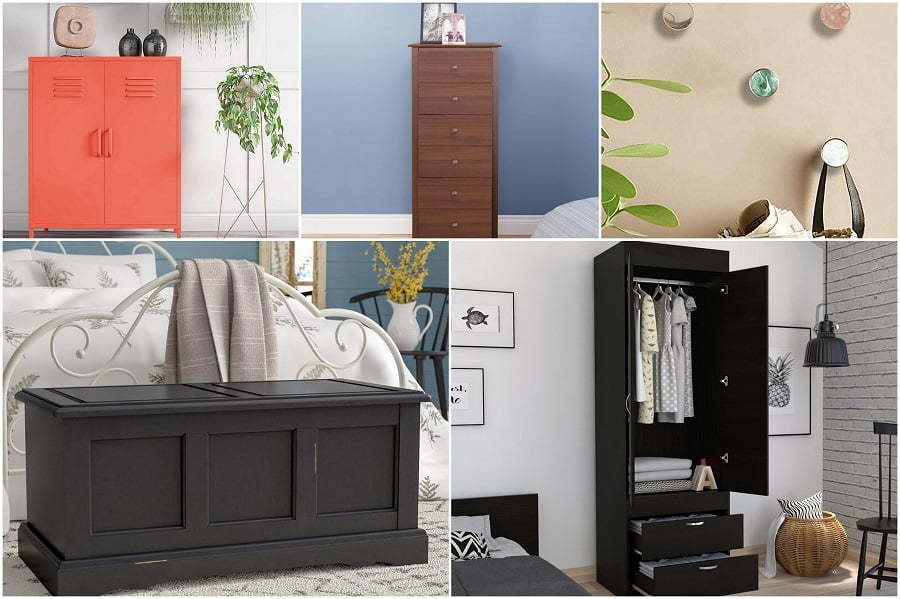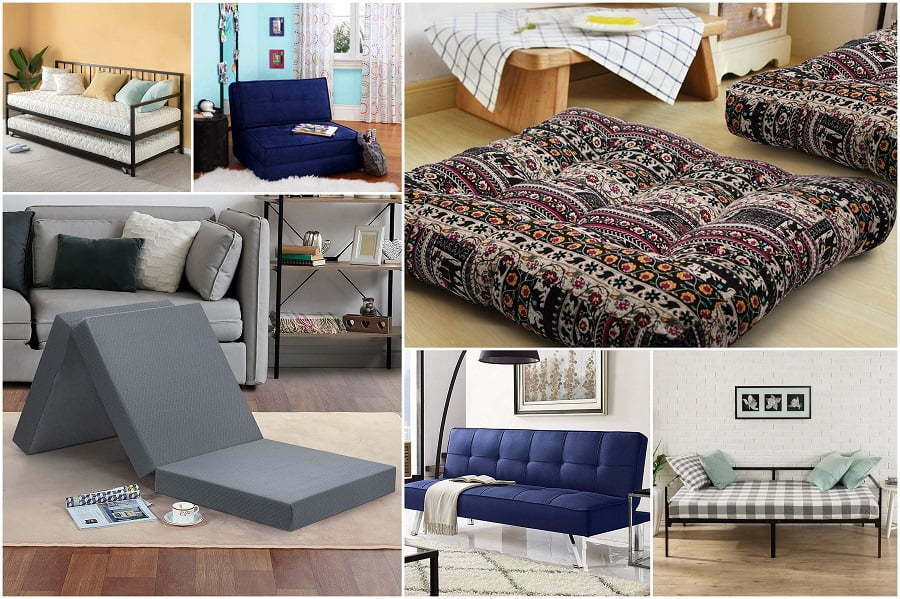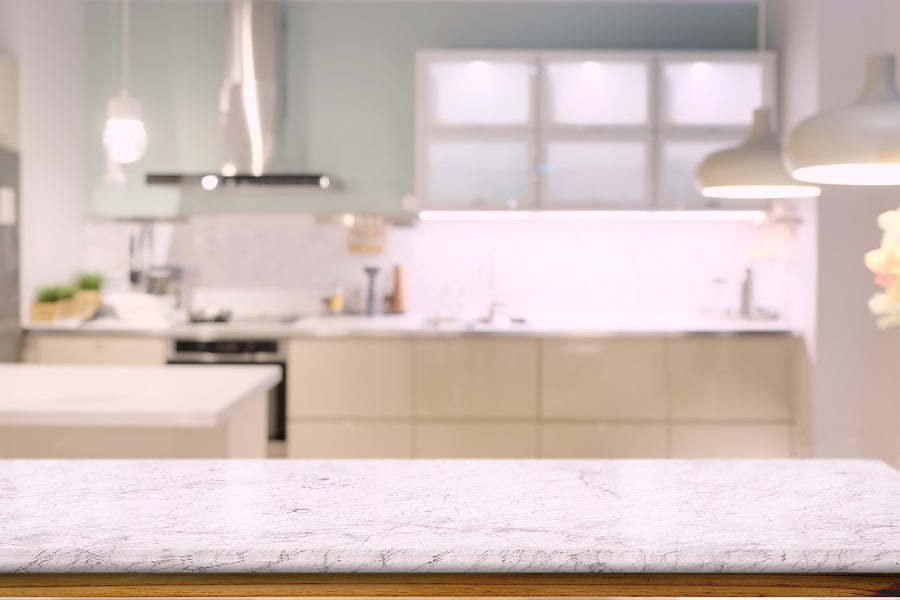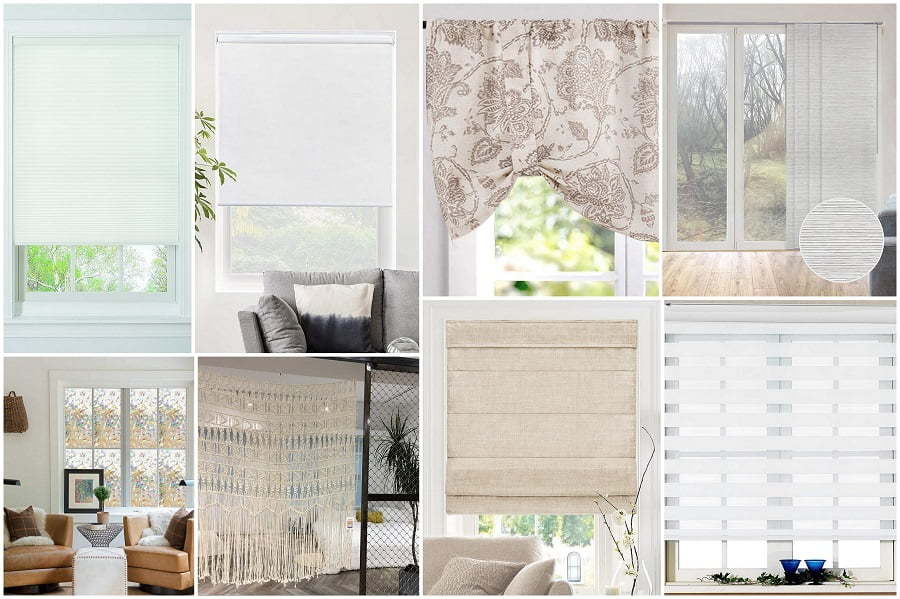Last updated on
Explore innovative roof waterproofing alternatives to protect your home from water damage and leakage, ensuring a durable and long-lasting shelter for you and your family.
Traditional waterproofing methods can be expensive and time-consuming. That’s why I’ve put together this list of creative solutions that will protect your home from water damage and add some unique flair to your exterior design.
So whether you’re on a tight budget or just looking for some inspiration, keep reading for some innovative ideas that will help you achieve a stunning and leak-free roof!
Liquid Waterproofing Membrane
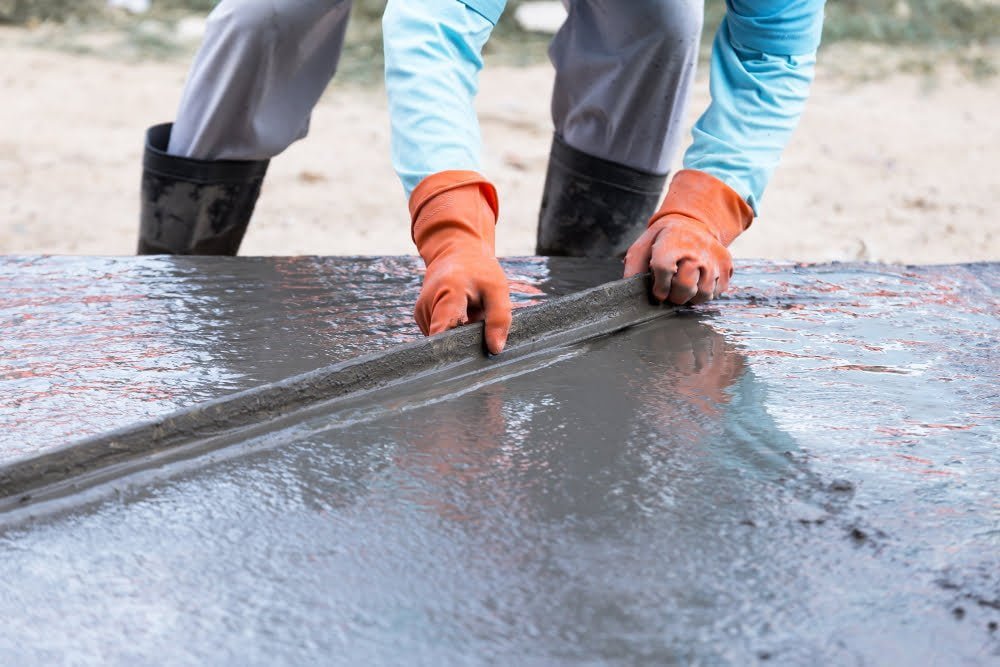
Liquid waterproofing membrane is a popular alternative for roof waterproofing. A liquid-applied coating forms a seamless, flexible, and durable membrane over the roof surface.
This roofing material can be applied to various roofs such as concrete, metal, and wood. Liquid membranes are easy to apply with minimal preparation required before application.
One advantage of using liquid waterproofing membranes is their ability to conform to any shape or size without seams or joints, making them ideal for complex roof designs. They also provide excellent resistance against UV rays and weather elements making them suitable for all climates.
Another benefit of this type of roofing material is its long lifespan when properly installed by professionals with regular maintenance checks done every few years.
Bituminous Coating
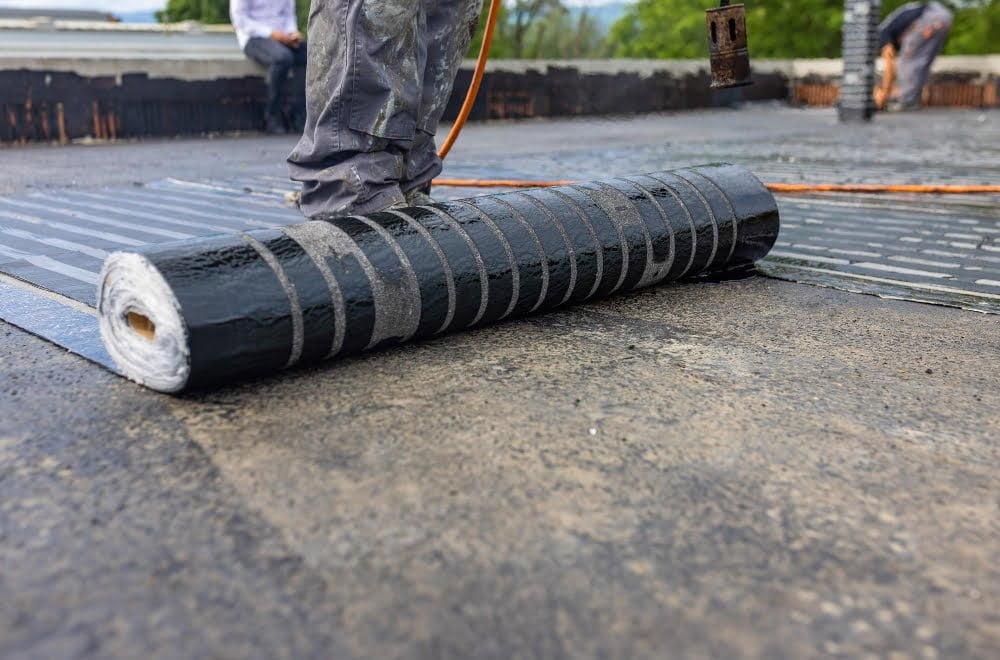
It is made from bitumen, which is a sticky, black and highly viscous liquid that acts as an adhesive. Bituminous coatings are applied to the roof surface using a brush or spray gun.
The coating dries quickly to form a seamless layer that provides excellent protection against water penetration.
One of the advantages of bituminous coatings is their durability; they can last up to 10 years with proper maintenance. They are also resistant to UV rays, making them ideal for areas with high sun exposure.
However, it’s important to note that bituminous coatings may not be suitable for all types of roofs or climates. In colder temperatures, they can become brittle and crack over time if not properly maintained.
Rubberized Asphalt
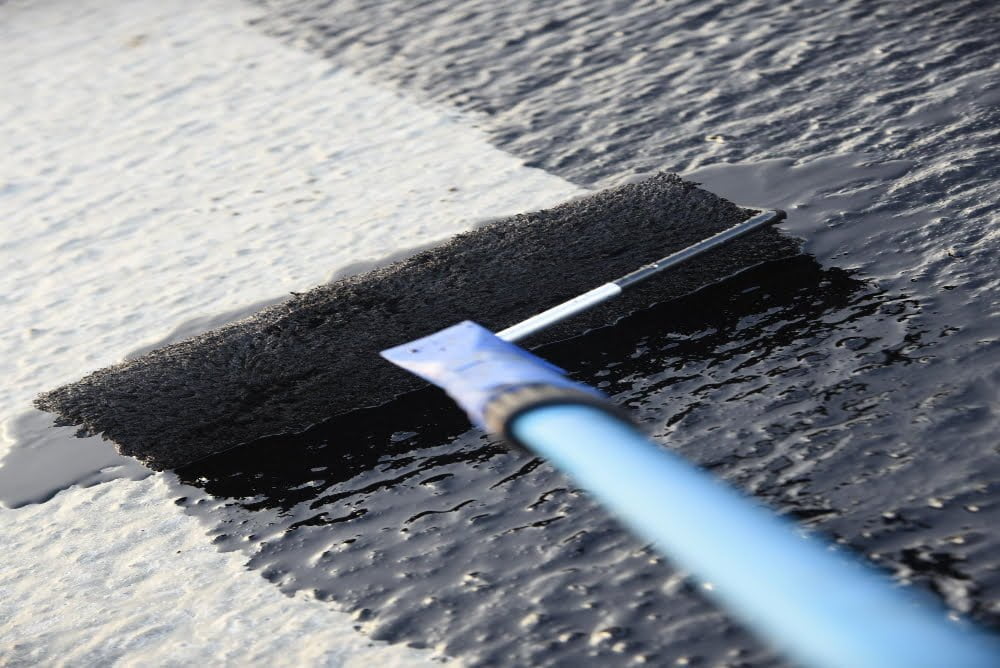
It is made by blending asphalt with recycled rubber, which makes it more durable and flexible than traditional roofing materials. Rubberized asphalt can be applied in liquid form or as pre-fabricated sheets that are rolled out onto the roof surface.
One of the benefits of using rubberized asphalt for waterproofing is its ability to withstand extreme temperatures and weather conditions without cracking or deteriorating. It also has excellent resistance to UV rays, which helps prolong its lifespan.
Another advantage of using this material is that it can be installed quickly and easily, reducing labor costs compared to other roofing systems. Because it contains recycled materials, rubberized asphalt may qualify for LEED credits in green building projects.
Thermoplastic Membrane (TPO)
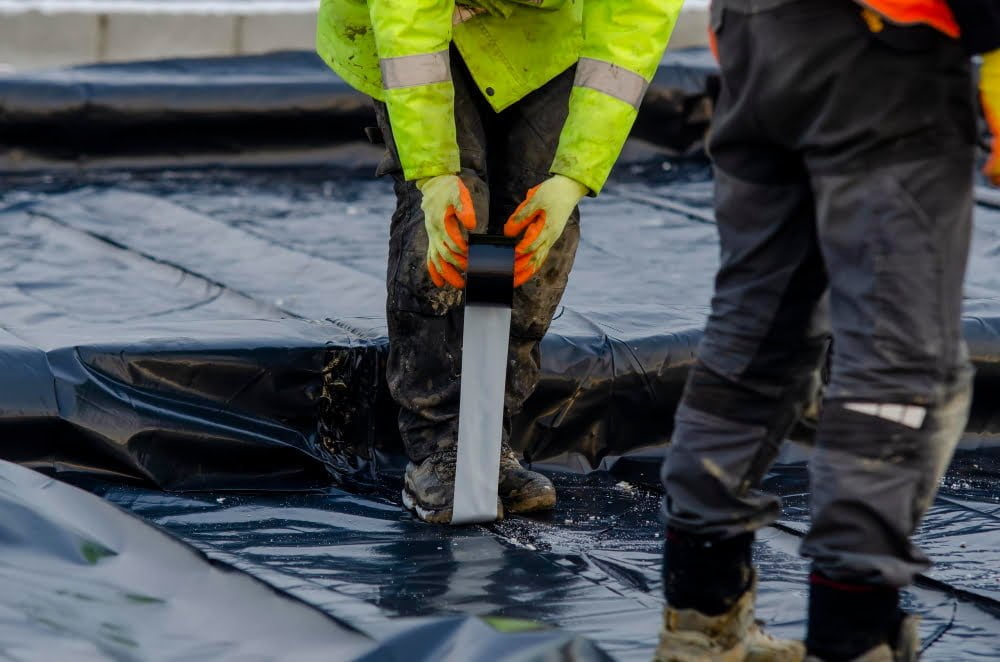
It is made of a single-ply reflective material that can be heat-welded together to form a seamless, watertight barrier on the roof surface. TPO roofing systems are highly resistant to UV rays and chemical exposure, making them ideal for commercial buildings with flat or low-sloped roofs.
One of the main advantages of TPO roofing is its energy efficiency. The white reflective surface helps reduce cooling costs by reflecting sunlight away from the building and reducing heat absorption.
TPO membranes are lightweight and easy to install compared to other traditional roofing materials.
However, it’s important to note that not all TPO products are created equal in terms of quality and durability. When choosing this option as your waterproofing solution, make sure you select high-quality materials from reputable manufacturers who offer warranties on their products’ performance over time.
PVC Roofing Sheets
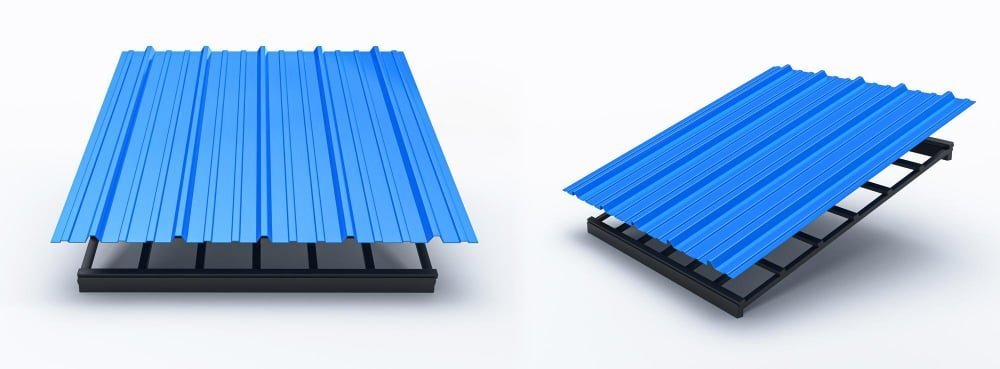
They are made of polyvinyl chloride, which is a synthetic plastic polymer that is durable and long-lasting. PVC roofing sheets come in different colors and thicknesses, making them versatile for various types of roofs.
One advantage of using PVC roofing sheets is their resistance to UV rays, chemicals, and fire. They also have excellent insulation properties that help regulate the temperature inside the building.
Installation of PVC roofing sheets can be done through mechanical fastening or adhesive bonding methods. The former involves attaching the sheet to the roof deck with screws or nails while adhesive bonding uses an industrial-grade glue to attach it directly onto the surface.
EPDM Rubber Roofing
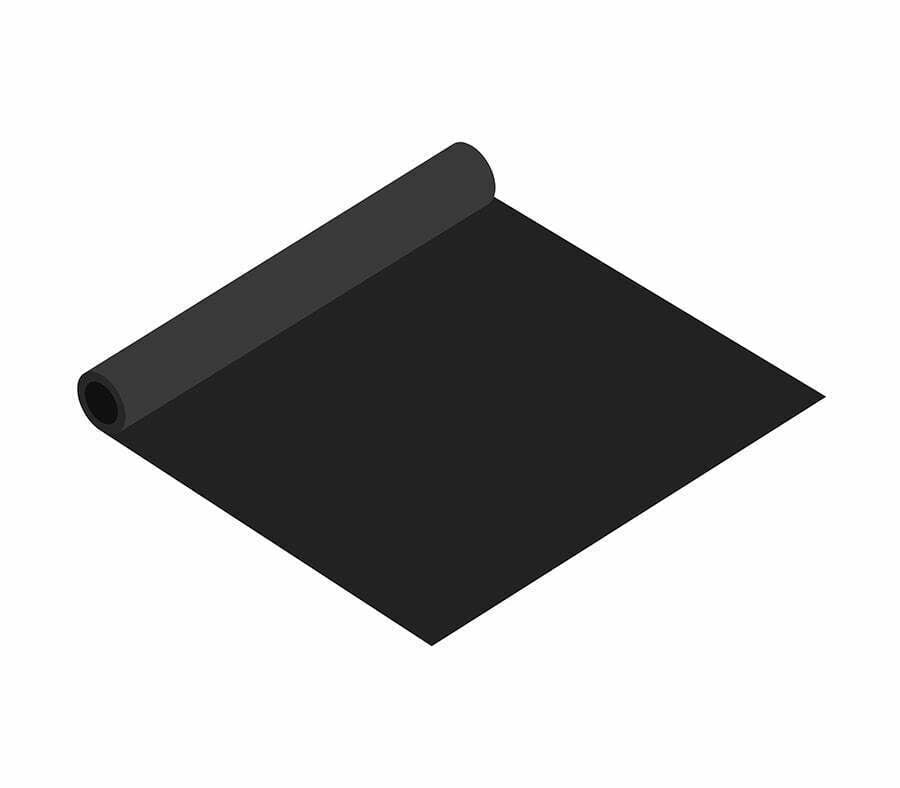
EPDM stands for Ethylene Propylene Diene Monomer, a synthetic rubber material with excellent resistance to weathering and UV radiation. It can be installed in large sheets or panels, making it an ideal choice for flat or low-sloped roofs.
One of the main advantages of EPDM roofing is its durability and longevity. It can last up to 50 years with proper maintenance and care.
It requires minimal upkeep as it does not crack or shrink over time like other materials.
Another benefit of using EPDM roofing is its energy efficiency properties. The material reflects heat from the sun, reducing cooling costs during hot summer months.
Green Roof Systems
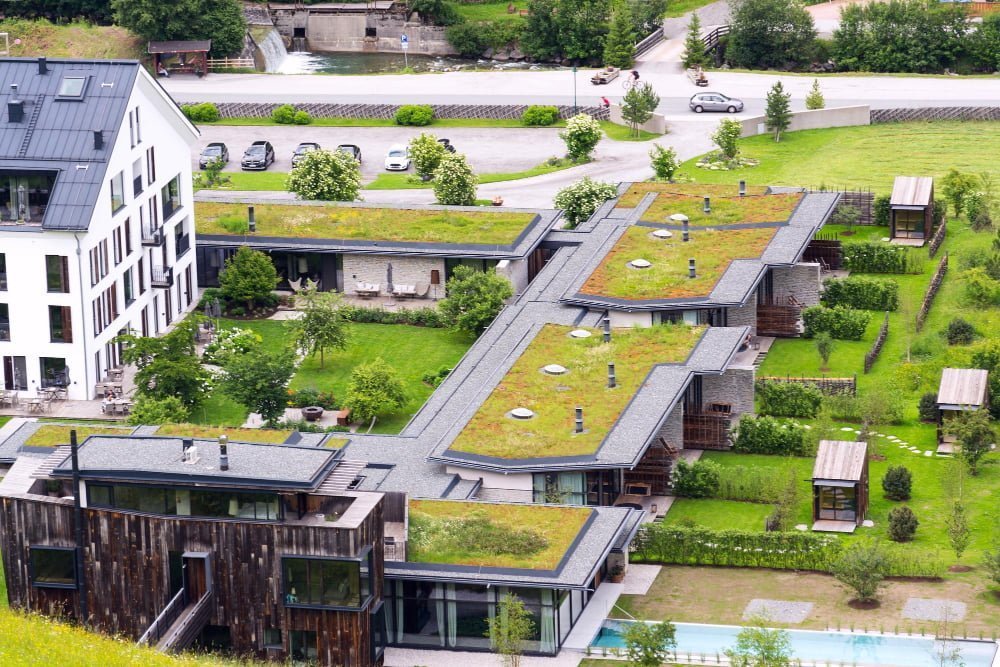
These roofs consist of layers of vegetation, soil, and drainage materials that provide insulation for the building while also reducing stormwater runoff.
Green roofs can be installed on flat or sloped surfaces and offer numerous benefits such as improving air quality, reducing energy costs by providing natural insulation, and extending the roof membrane’s lifespan by protecting it from UV rays and temperature fluctuations.
Green roofs create habitats for birds and insects in urban areas with limited green spaces. While they may require more maintenance than other types of roofing systems due to their living components, they offer a unique aesthetic appeal that is hard to match with any other type of roofing system available today.
Polyurethane Liquid Membranes
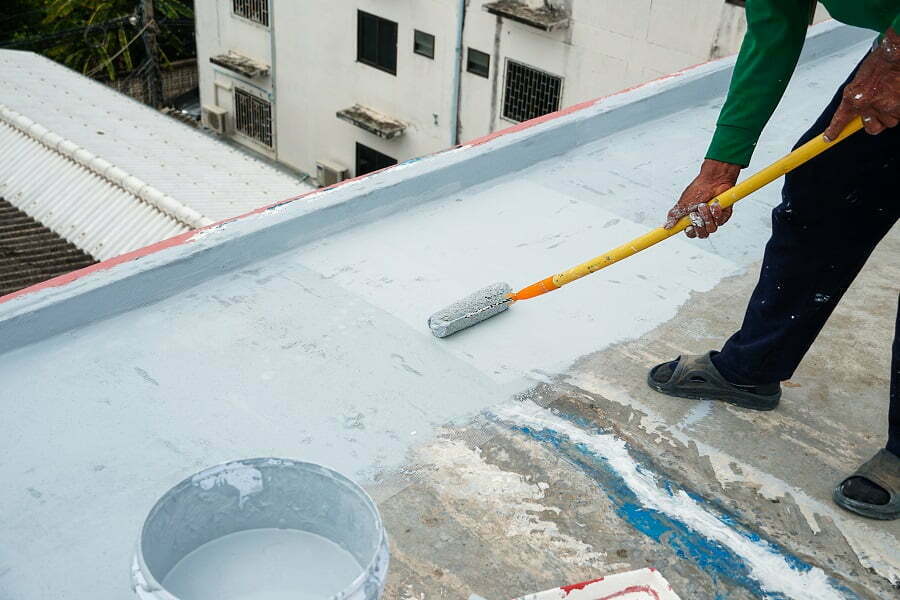
They are applied as a liquid and then cured to form a seamless, durable membrane that is resistant to water, chemicals, and UV rays. Polyurethane membranes can be used on various types of roofs including concrete, metal or wood.
One of the benefits of polyurethane liquid membranes is their flexibility, allowing them to expand and contract with temperature changes without cracking or splitting. This makes them ideal for areas with extreme weather conditions.
Another advantage is that they can be applied directly over existing roofing materials such as asphalt shingles or metal panels without the need for removal which saves time and money on labor costs.
However, it’s important to note that proper surface preparation is crucial before applying polyurethane liquid membranes in order to ensure adhesion. Installation should only be done by experienced professionals who have been trained in its application techniques.
Fiberglass Shingles
These shingles consist of a fiberglass mat, which is coated with asphalt and topped with ceramic granules. The fiberglass mat provides strength and durability to the shingle, while the asphalt coating makes it waterproof.
Fiberglass shingles come in a variety of colors and styles, making them an attractive option for homeowners who want to add curb appeal to their homes. They are also relatively easy to install compared to other roofing materials.
One advantage of using fiberglass shingles for waterproofing is that they can withstand harsh weather conditions such as heavy rain or snowfall without getting damaged easily. They have good fire resistance properties due to their composition.
However, one downside of using fiberglass shingles is that they may not last as long as some other types of roofing materials like metal or tile roofs.
Cementitious Waterproofing
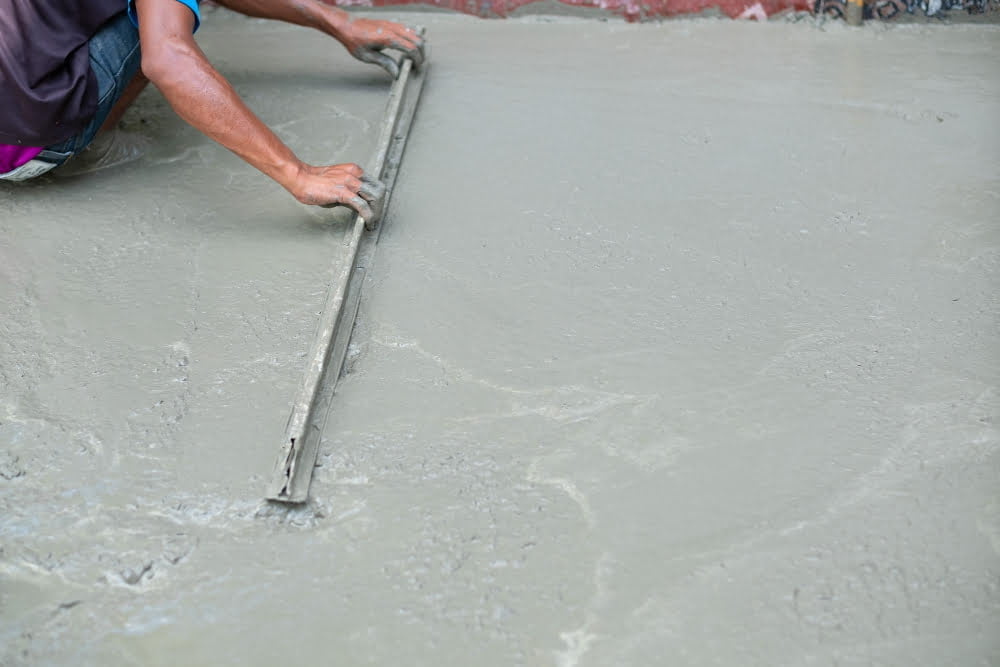
This method involves applying a cement-based mixture to the surface of the roof, which creates an impermeable layer that prevents water from penetrating through. The mixture consists of Portland cement, sand, and other additives that enhance its durability and flexibility.
One advantage of using cementitious waterproofing is its affordability compared to other methods such as TPO or PVC roofing sheets. It also provides excellent protection against harsh weather conditions like heavy rain or snowfall.
However, it’s important to note that this method requires proper application by experienced professionals since any installation errors can lead to future leaks. It may not be suitable for roofs with complex designs due to difficulties in achieving uniform coverage on all surfaces.
Metal Roofs With Sealants

However, they can be prone to leaks if not properly sealed. One alternative to traditional metal roof sealing methods is using sealants.
These sealants come in various forms such as silicone-based or acrylic elastomeric coatings that create a waterproof barrier over the metal surface.
One of the benefits of using sealants on metal roofs is that they can be applied directly onto existing roofing materials without requiring extensive preparation work or removal of old roofing layers. These coatings are flexible and able to expand and contract with temperature changes, making them ideal for areas with extreme weather conditions.
When considering this option, it’s important to choose high-quality products from reputable manufacturers and ensure proper application by experienced professionals for optimal results.
Silicone-based Coatings
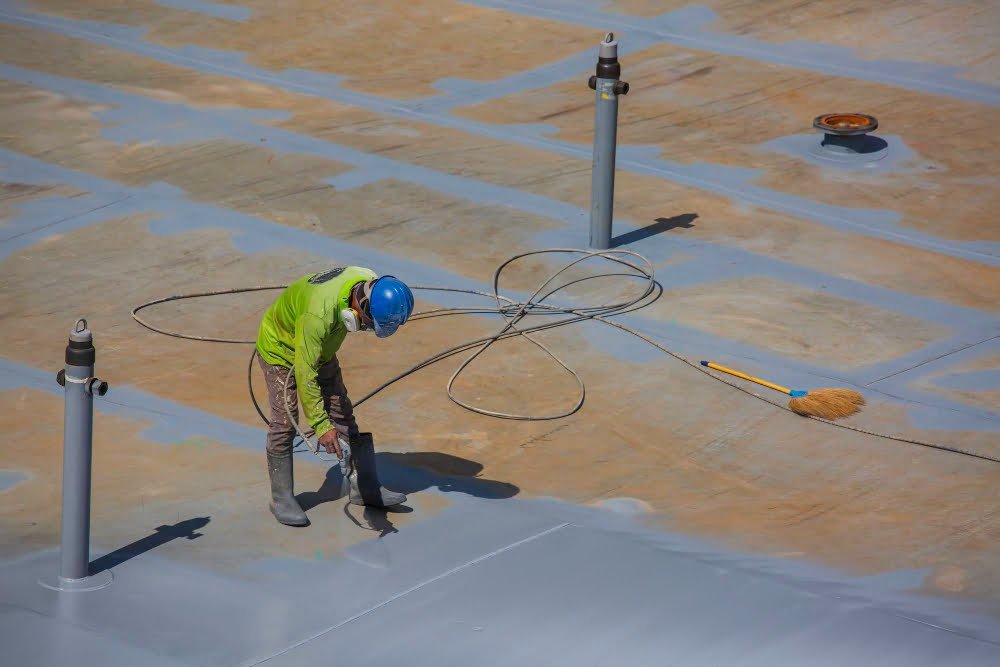
They are known for their durability and flexibility, making them ideal for areas with extreme weather conditions. These coatings can be applied to various types of roofs, including metal, concrete, and asphalt.
One of the main advantages of silicone-based coatings is that they do not degrade over time due to UV exposure or temperature changes. This means that they require less maintenance compared to other roofing materials.
Another benefit is their ability to resist ponding water on flat roofs without breaking down or cracking under pressure. Silicone-based coatings also have excellent adhesion properties which allow them to bond well with different surfaces.
However, it’s important to note that silicone-based coatings can be more expensive than other alternatives such as bituminous coating or liquid waterproofing membrane. Proper surface preparation is crucial before applying the coating in order for it adhere properly and provide long-lasting protection against leaks and moisture damage.
Acrylic Elastomeric Coatings
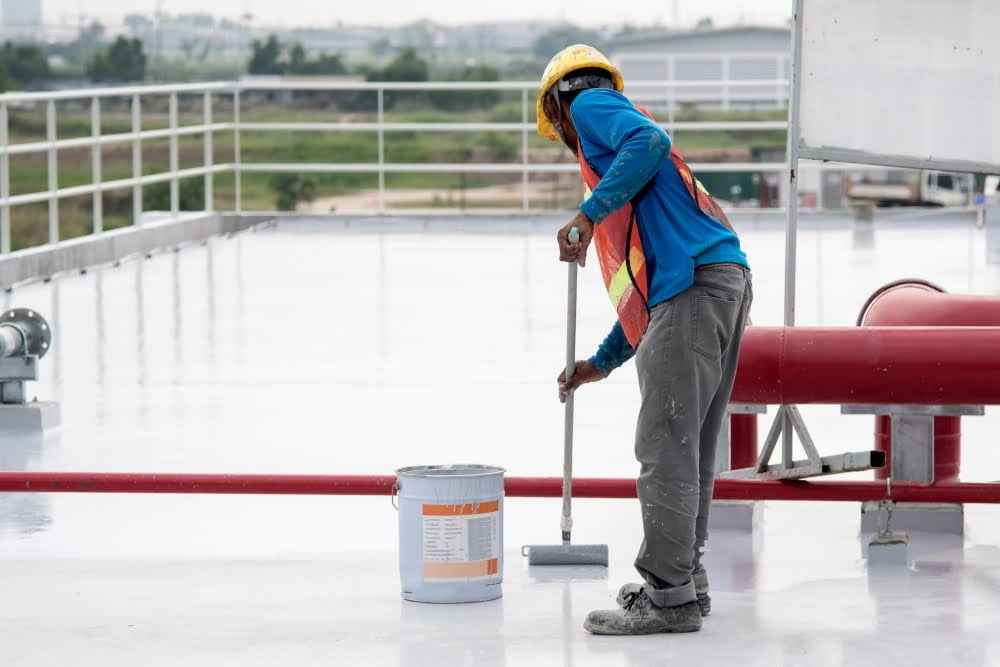
These coatings are acrylic polymers and can be applied to various roofs, including metal, concrete, and asphalt shingles. They provide excellent protection against water damage by forming a seamless membrane that expands and contracts with the roof’s movement.
One of the main advantages of using acrylic elastomeric coatings is their ability to reflect sunlight. This helps reduce heat absorption in the building’s interior during hot weather conditions, leading to lower energy costs for air conditioning.
Another benefit is their durability; they can last up to 10 years or more with proper maintenance. Acrylic elastomeric coatings also come in different colors that can enhance your home’s aesthetic appeal while providing long-lasting protection from harsh weather elements.
However, it is important to note that these coatings require professional installation as they need specific equipment and expertise for application.
Modified Bitumen Roll-roofing
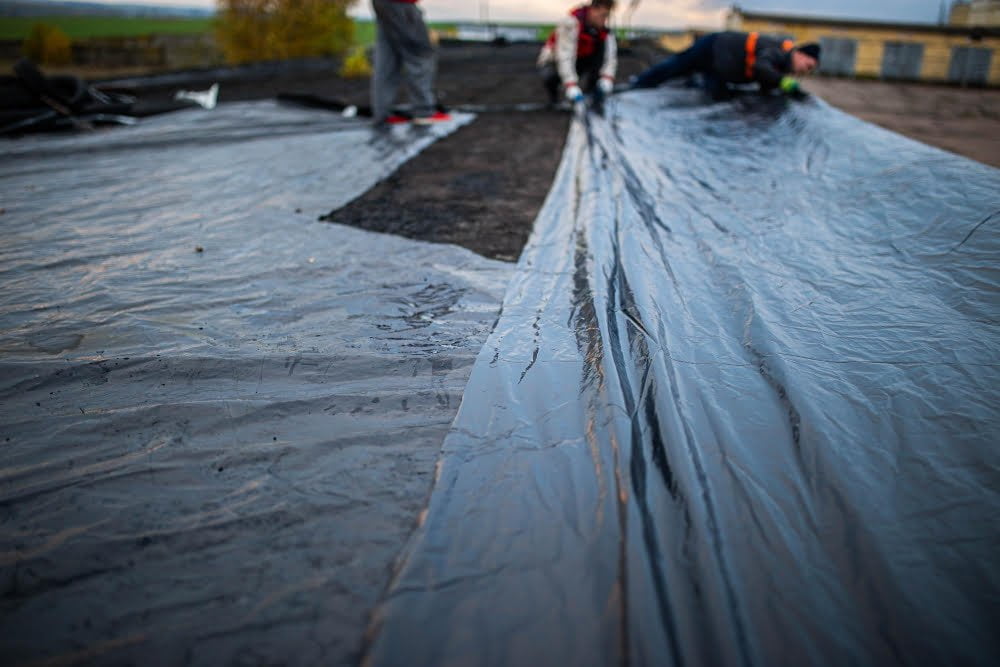
It is made of asphalt and reinforced with fiberglass or polyester, making it durable and long-lasting. The rolls come in different sizes, colors, and textures to match the style of your home.
Modified bitumen roofing can be installed using various methods such as torch-down application or cold adhesive bonding. This type of roofing material provides excellent resistance against UV rays, weather elements like rainwater or snowmelt runoff while also being cost-effective compared to other alternatives on the market today.
Built-up Roof System
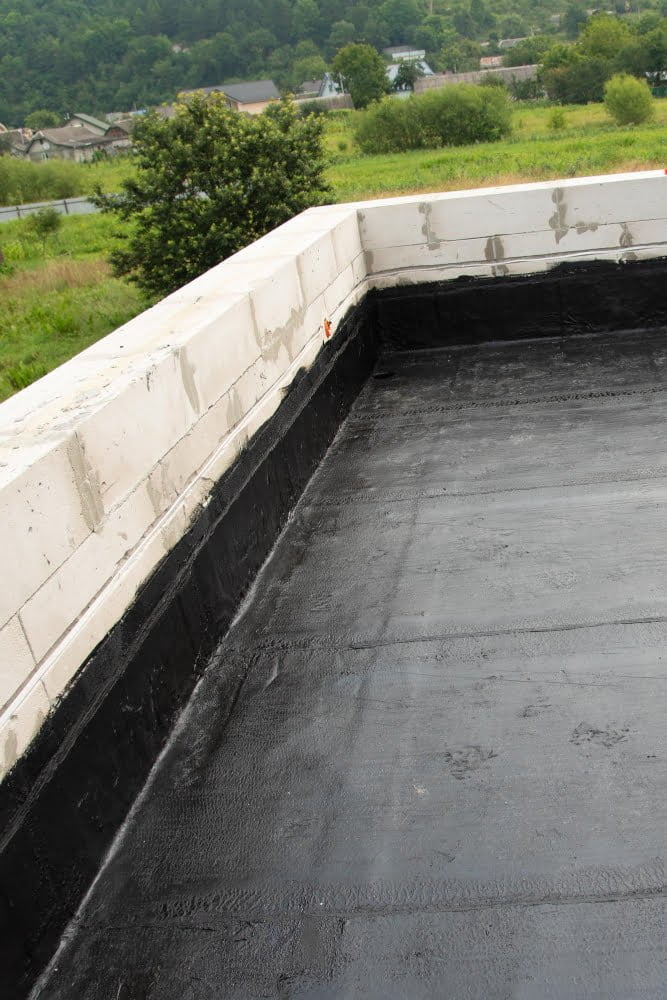
It consists of multiple layers of bitumen and reinforcing fabrics that are alternately applied to create a durable membrane. The number of layers can vary depending on the specific requirements for the roof’s protection against water damage.
The built-up roof system has been used for over 100 years and is still popular today due to its effectiveness in preventing leaks. It provides excellent insulation properties, which can help reduce energy costs by keeping buildings cooler in summer and warmer in winter.
One downside to this roofing option is that it requires skilled laborers with experience installing it properly. BUR systems tend to be heavier than other options like single-ply membranes or coatings; therefore they may not be suitable for all structures.
If you’re looking for an affordable yet effective way to waterproof your flat roof while providing good insulation properties at the same time, consider using a built-up roofing system!.
Recap
